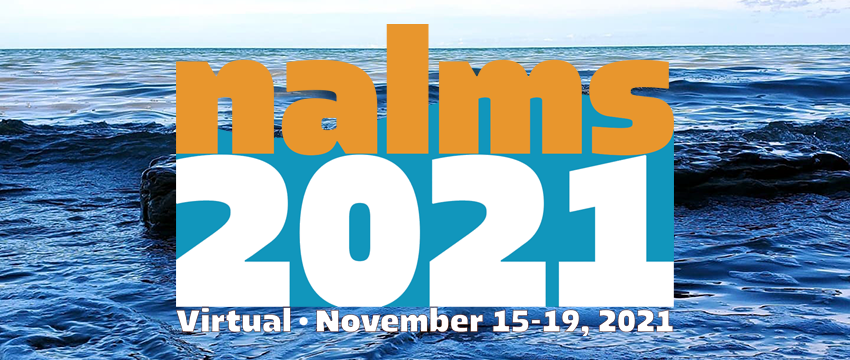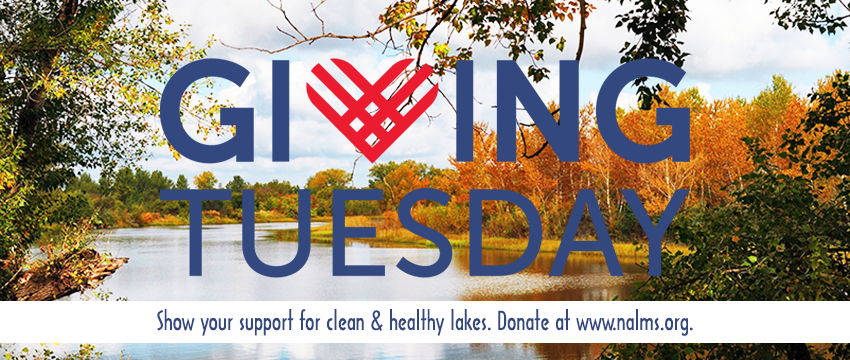NALMS Takes a Stand for Clean Lakes Programming & Lake Shoreland Protection
By Jessica Converse, NALMS Policy Intern; NALMS 314 Working Group
Lake conditions change slowly over time, but their transformations are not to be minimized. These inland bodies of water are sentinels of climate change impacts over broader catchment scales. Additionally, diminished lake quality exacerbates the release of greenhouse gases (Beaulieu et al., 2019) and encourages harmful cyanobacteria growth (Paerl, 2017), both of which impact public health. Without concerted effort to protect and restore water quality as well as reimagine investment into lake communi...
NALMS 2021 Achievement Award Winners
FOR IMMEDIATE RELEASE
December 6, 2021
Contact: Alyssa Anderson, Marketing & Membership Director
Phone: 608-233-2836
Email: info@nalms.org
North American Lake Management Society Honors Members & Partners with 2021 Achievement Awards
MADISON, WI – Shining a spotlight on deserving individuals and organizations who have made valuable contributions to the goals of the North American Lake Management Society (NALMS), or have made significant strides in lake management, NALMS Annual Achievement Award winners represent the very best amongst its members and ...
NALMS 2021 Election Results
The annual election for officers and directors is an important way for NALMS members to provide input in the management of the Society. Our officers and directors are all volunteers who serve without pay. Thank you to all the candidates for their dedication to NALMS and thank you to all NALMS members who participated in this year’s election!
Region 10 Director – Mark Rosenkranz
Mark Rosenkranz has been the NALMS Region 10 representative since 2018 and in that time has served as temporary Chair of the Communications Committee; served on the Conference ...
Support NALMS on Giving Tuesday
This year, on Tuesday, November 30th, NALMS is proud to once again be participating in Giving Tuesday, a global day dedicated to giving.
Celebrated on the Tuesday following Thanksgiving (in the U.S.) and the widely recognized shopping events Black Friday and Cyber Monday, #GivingTuesday kicks off the charitable season, when many focus on their holiday and end-of-year giving. Since its founding in 2012, #GivingTuesday has inspired giving around the world, resulting in greater donations, volunteer hours, and activities that bring about real change in communities.
W...
NALMS Releases a Position Statement and Policy Recommendations on Nature-based Solutions in Urban Lakes and Watersheds
By Gabriella Placido, NALMS Policy Intern
Despite being just over halfway through the year, 2021 has already broken an assortment of records with its extreme weather and unprecedented circumstances. Intense storms, heat waves, fires, floods, droughts, and a series of harmful algal blooms have plagued North America and the rest of the world, all while trying to overcome a persistent and troublesome pandemic. Such notable and problematic effects of climate change are increasing in intensity and frequency around the globe; the climate crisis can be ignored no longer....
“Lakespert” – “Lakespert” becomes “Lawnspert”!
Steve Lundt, CLM
Fertilizing your lawn in the fall can protect your lake in the spring
"Lakespert” becomes “Lawnspert” (second coined term). Here in Colorado, I have been steadily working on a state-wide phosphorus-free lawn fertilizer initiative (minus legislation). This phosphorus prevention effort has taught me a few things about lawns and fertilizing that I would like to share.
Starting with the Four R’s – Right Place, Right Time, Right Product, and Right Rate. This mnemonic device helps people, that use fertilizers, think about the connections ...
Bird Hugger Podcast: Preventing Cyanobacteria Outbreaks in Lakes and Ponds
On Thursday, September 23rd, NALMS Inland HABs Program Co-Lead and aquatic biologist, Angela Shambaugh, was featured on the popular nature podcast, Bird Hugger! In the 30-minute episode, Angela discusses with podcast host, Catherine Greenleaf, how to prevent toxic Cyanobacteria blooms in lakes and ponds.
A big thank you to Catherine for discussing this important topic and to Angela for, once again, sharing her knowledge and time!
More about NALMS' Inland HAB Program
https://www.nalms.org/inlandhabs/
GOAL 1 | use sound science
Utilize sound science to ...
NALMS 2021 Election Candidates
The 2021 election for officers and directors is underway. Voting in the annual election is an important way for NALMS members to provide input in the management of the Society. Our officers and directors are all volunteers who serve without pay.
All members may vote for President-Elect.
The President-Elect serves for one year in that position after which they serve as President for one year and Past-President for one year.
Members may also vote for a director to represent their NALMS Region. Regional Directors are elected for a three-year term and may serve up ...
Monitoring HCBs with the bloomWatch App
by Leah Hicks, NALMS Community-Based Science Intern
With the occurrence of harmful cyanobacteria blooms (HCBs) increasing throughout the world, it is of the utmost importance to increase community awareness about water safety when cyanobacteria are present. Cyanobacteria, commonly referred to as blue-green algae, are small bacteria found in waterbodies throughout the world. They are some of the earth’s oldest living organisms. When some cyanobacteria are found in high concentrations they form blooms, which are characterized by a discoloration of the water (often ...
“Lakespert” – Algal rating system
Steve Lundt, CLM
“…signs, signs, everywhere a sign…”
And the lake sign should be an “Algalmeter.” Yes, an Algalmeter. I do get tired of signs, especially when I visit a beautiful lake, but I have recently created and installed an algal rating system at a local state park (Figure 1). I based it on the National Fire Danger Rating System (NFDRS) and incorporated it with my lake monitoring events to help with public safety and awareness. Harmful algal blooms are important to understand, control, and are not well understood by the public. Thus, the need for ...






